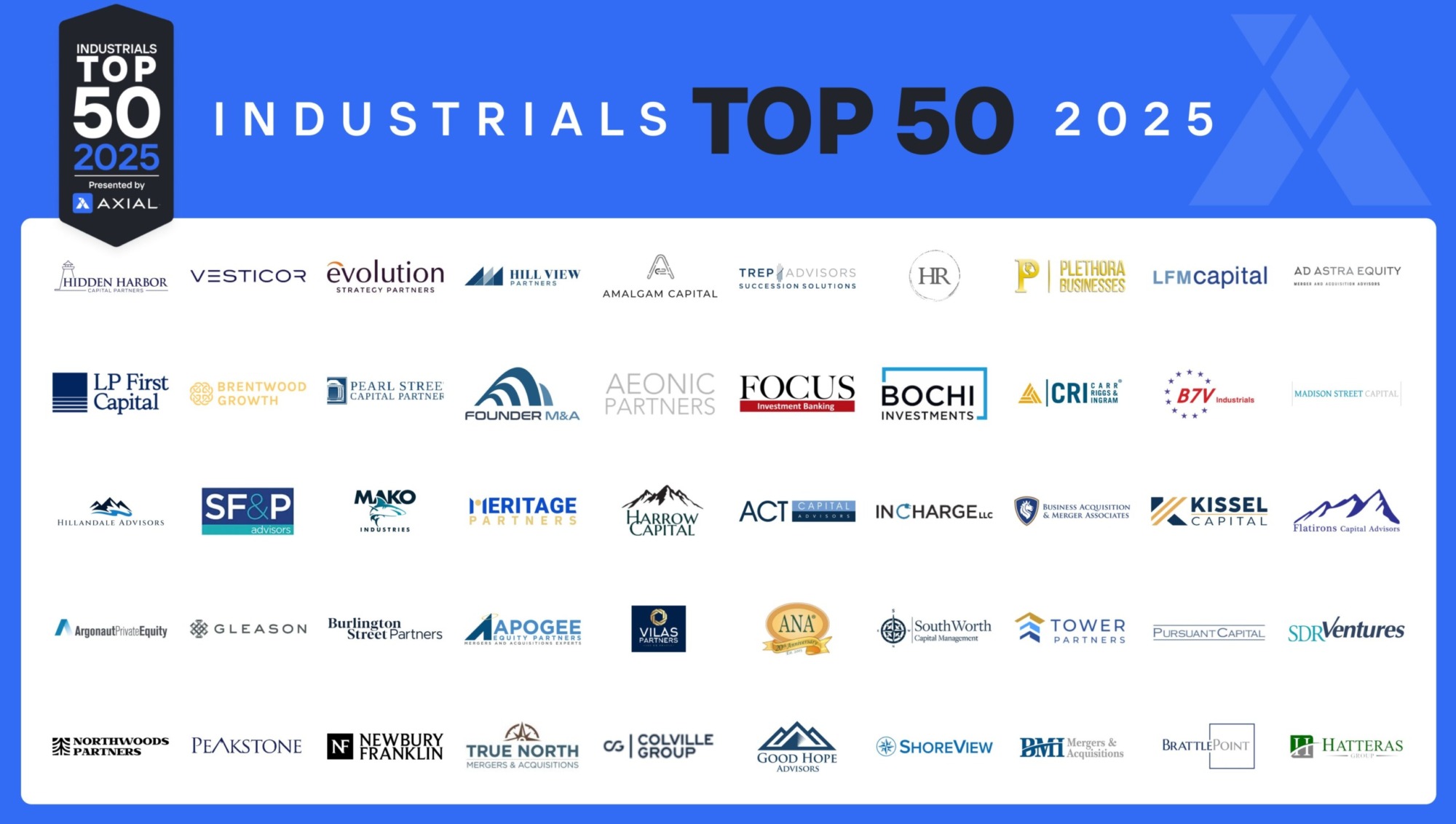
The Top 50 Lower Middle Market Industrials Investors & M&A Advisors [2025]
Industrials remains the most dominant sector in Axial deal flow, representing more than 25% of all deals brought to market…
Limited partners’ appetite for assets in the private equity industry continues to grow. Look no further than the $1.4 trillion in dry powder the industry has racked up. To satisfy LP demand, private equity firms are looking for ways to expand their offerings beyond the traditional private equity funds. The number of funds has increased steadily since the beginning of the current cycle, as GPs take steps to stretch beyond their core, according to Bain & Company’s 2019 annual Global Private Equity Report. According to the report’s findings in 2008, average number of active funds per private equity firm was 2.9; in 2018 that number jumped to 3.9.
“While these menu expansions typically depend on where the firm thinks it can best take advantage of its unique capabilities, we’ve seen heavy activity in three areas: sector-focused pools of capital, growth equity funds and long-duration funds,” according to the report. Credit funds have also become more popular.
Sector specialization has become very popular today. According to the report, the number of sector-focused funds in the market has grown sharply since the economy began its climb out of the global financial crisis in 2010. In today’s competitive market, specialization allows firms to work in areas where they have deep expertise and a network that will help them acquire attractive assets. Healthcare and technology are the two most popular areas of specialization today, with about half of the sector-specific funds on the market dedicated to these industries, according to the report.
“The superior growth characteristics of these two broad sectors have attracted PE investors for years, but they’ve become even more popular among LPs at a time when fears of an economic downturn are prompting investors to look for cover. Healthcare and technology offer the holy trinity of strong growth, recession resistance, and superior historical returns. In the current cycle, healthcare deals have returned $2.2 for every $1 of invested capital on a gross pooled basis, while technology deals have returned $2.1, according to CEPRES PE Analyzer.
There have been a number of healthcare and technology funds raised recently. At the beginning of 2019, Luminate Capital Partners closed its second fund with $425 million in commitments. In 2018, Thoma Bravo closed on its $2.4 billion Discover Fund II, focused on technology, and Linden Capital Partners closed on its $1.5 billion Fund IV, dedicated to healthcare.
As competition from patient capital grows and GPs feel a stronger need to offer LPs what they want, private equity firms are increasingly experimenting with funds that have holding periods of 15 to 20 years. Bigger players like Blackstone, VIsta Equity Partners, KKR, and Carlyle have all closed on such funds with billions of dollars in their coffers. “This corner of the PE universe is still relatively small and untested. But it is growing steadily as investors come to appreciate its virtues—lower transaction costs, advantaged tax treatment, more flexibility to sell when the time is right, and capital that is fully invested over longer periods,” according to the report.
The appeal of growth equity funds continues to soar. According to the Bain report, since 2014, $375 billion has been raised globally for the strategy. For some private equity firms it’s a return to their roots. While they started out raising funds that felt much closer to growth equity, they grew through the current cycle to find themselves concentrated mostly in the buyout space. Raising a fund focused on fast-growth companies takes them back to where they started.
LPs are smitten with the asset class — 54 percent of LPs say they play to include growth capital funds in their investment plans in 2019, according to the Probitas Partners’ Annual Investors Trends survey.
Selling a minority stake in a business to a private equity firm is becoming increasingly prevalent and offers benefits to both owners and acquirers. According to Pitchbook, more than $21 billion has been raised in 2018 alone for minority investing. That’s in addition to the record-high $23 billion that was raised in 2017.
In the last two years, firms like The Riverside Company, Huron Capital, Level Equity Management, and Balance Point Equity have all diversified to be more inclusive of various deal terms, allowing them to cast their deal sourcing net much wider.
In 2017, The Riverside Co. closed on its first non-control investment fund, Riverside Strategic Capital Fund (RSCF) with $418 million in capital. With a very large deal sourcing operation, The Riverside Company had noticed an increased demand for non-control capital. “Many companies have capital needs that can’t be satisfied in the traditional lending markets anymore,” says George Cole, a managing partner and co-fund manager of Riverside Strategic Capital Fund. “Some companies need capital for add-on acquisitions, shareholder redemptions, or liquidity, but don’t necessarily warrant a change of control. We raised RSCF to meet that untapped need.”
Credit Funds
Many private equity firms have also diversified by raising credit funds. In fact, institutional investors made a record number of new commitments to credit funds in 2017, topping $10 billion to reach a peak of $28.7 billion in 2017, a 57 percent increase from the year before, according to Pensions & Investments.
The largest most recognizable private equity firms are actually the largest debt providers to the industry today. Firms such as The Blackstone Group, KKR, The Carlyle Group, and Apollo have larger debt portfolios than private equity ones at this point. That is a marked turnaround from when debt funds accounted for about one-fifth of their assets only a short decade ago.
“The debt market basically exploded over the past eight years. It’s been growing ever since banks had to back off from high-yield lending under regulatory pressure after the great financial crisis. Banks are not making high yield loans these days,” says Kelly DePonte, a managing partner with Probitas Partners. “After the banks pulled back there were all these lending teams without a home. They either spun out and created new firms or joined up with other financial institutions and started lending arms.”
Middle market private firms have shown strong interest in private credit in the past couple of years. Solar Capital Partners recently closed on $750 million in commitment to pursue a private credit strategy as did East Lodge Capital. Other firms that have built credit arms include Adams Street Partners, The Sterling Group, The Riverside Company, H.I.G. Capital, Thomas Bravo, BC Partners, Silver Lake, and Gryphon Investors.
In 2018, Gryphon Investors, a middle market private equity firm based in San Francisco, closed its first mezzanine fund, Gryphon Mezzanine Partners L.P., with $100 million. “Over the past few years, a number of our limited partners seeking current-yielding investments have asked us about opportunities to participate in debt financings,” says David Andrews, the firm’s CEO. “This fund is designed to primarily to satisfy that LP demand.”
